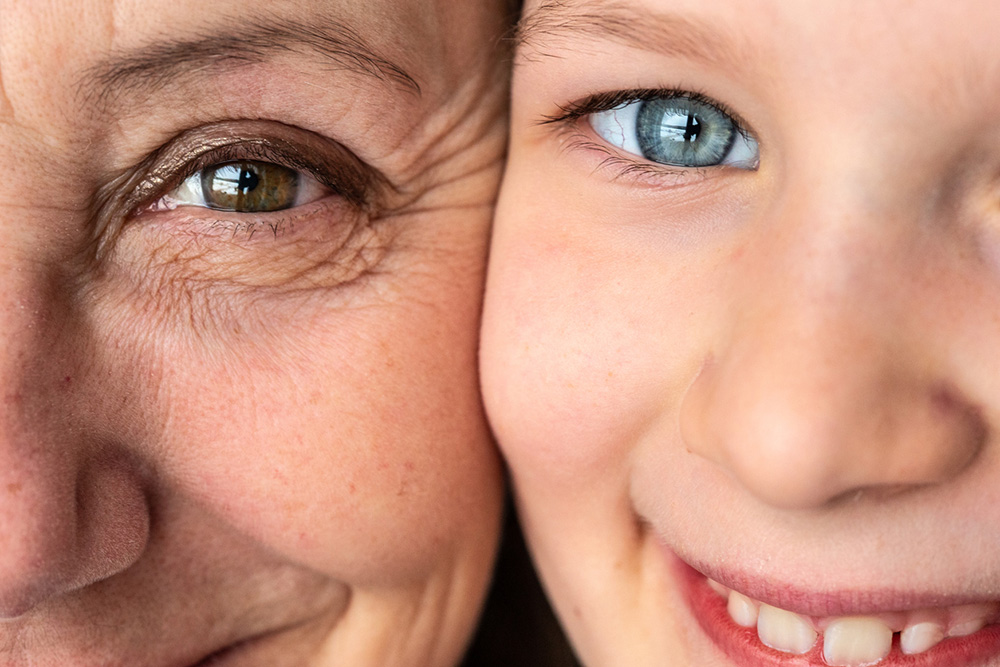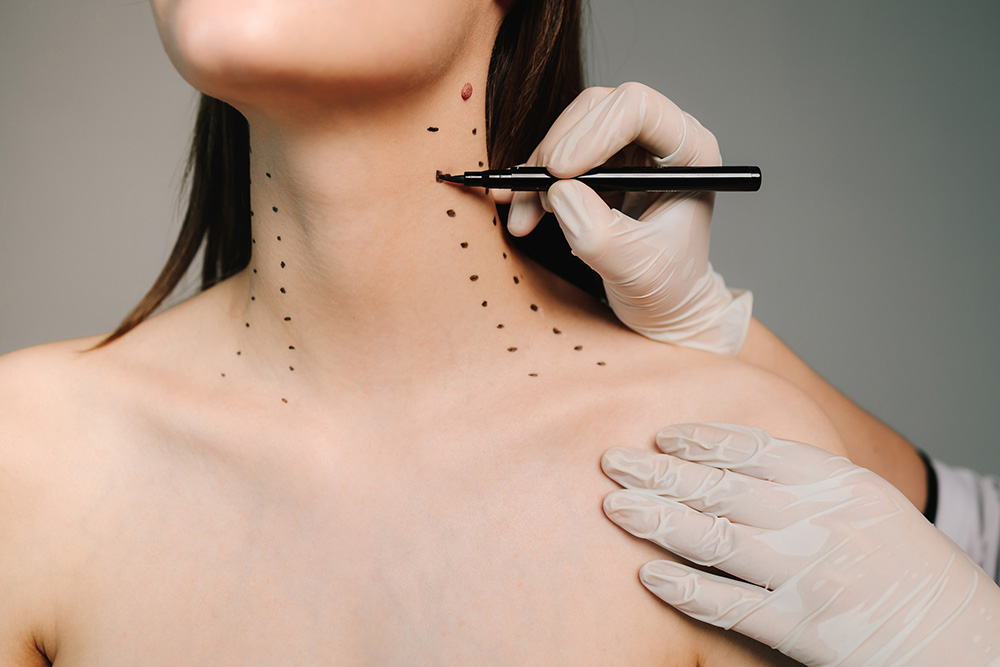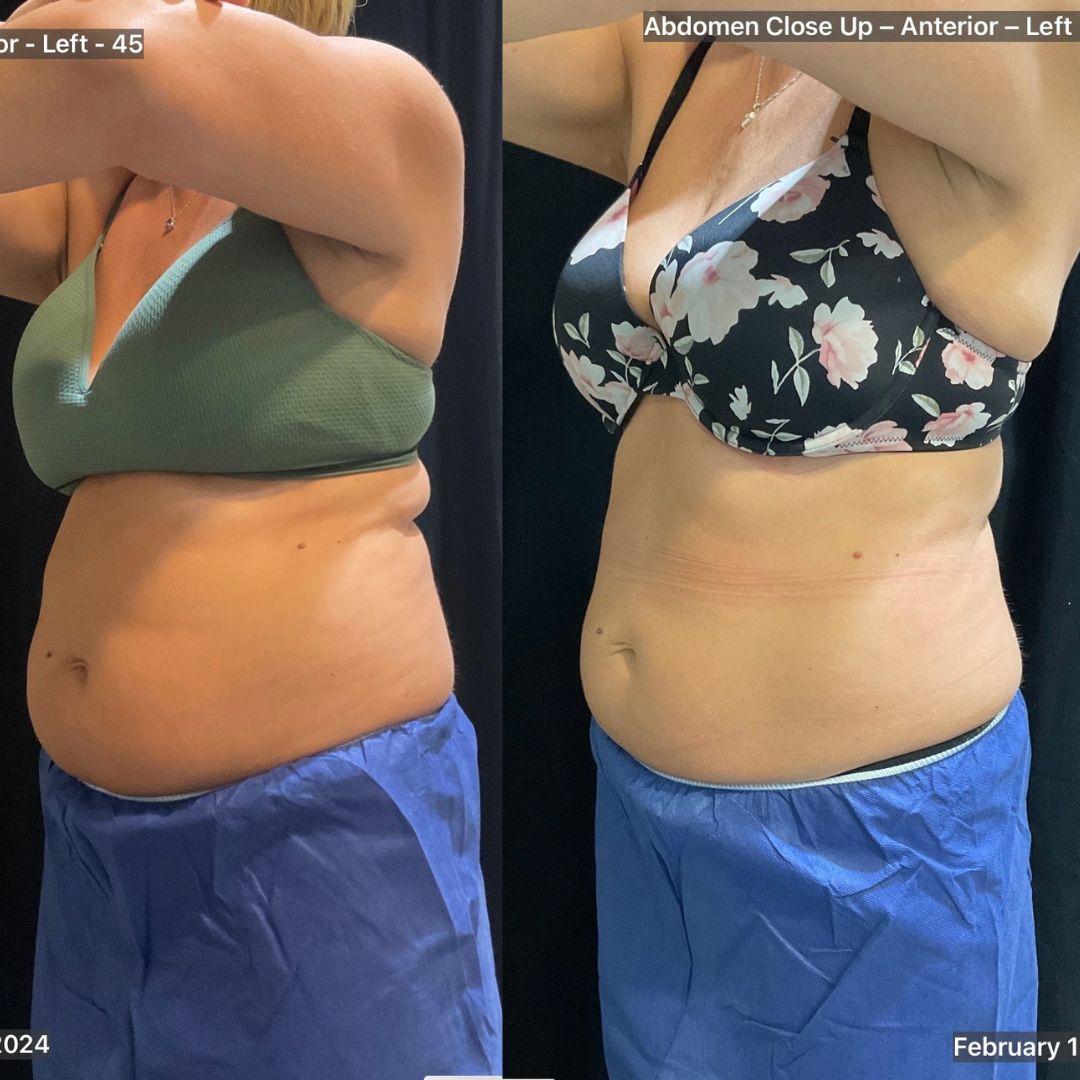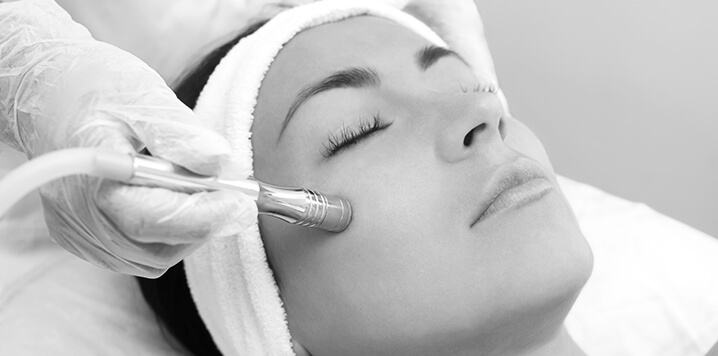This article was last updated on August 26. 2024.
Recently, I had some great questions regarding what I would do for the treatment of acne scarring, more specifically, regarding CO2 ablative laser resurfacing vs RF microneedling. Both are great options. I personally would use both if able, but it ultimately depends on the patient’s needs and expectations.
When Do We Choose Radio-frequency (RF) Microneedling for Acne Scars?
In general, RF Microneedling is considered to be “VOLUMETRIC” heating, and will heat uniformly under the skin and quite literally will create volume, especially in the mid face. So, in some patients with scarring, volume will be helpful and the needles themselves will actually help to break up the scarring under the skin. I like RF for this reason and would consider it as equivalent or really maybe even first line treatment vs CO2.
CO2 Laser Resurfacing for Acne Scars
Traditionally, lasers were the gold standard for acne scars. Specifically, ablative lasers, CO2 and Erbium, have been advocated over the nonablative lasers such as Fraxel 1550. In 2013, radiofrequency microneedling (RFM) was approved in the US and the dominance of lasers for acne scars has come under scrutiny. While there are indications for both technologies, this blog will elucidate the decision tree for which technology to use.
Fundamentally, ablative laser energy (heat) is generated outside the body and is driven into the skin at a temperature that causes ablation (vaporization) of the tissue at 100 C°. Radiofrequency Microneedling generates heat within the tissue by passing current through it. As the current encounters resistance (impedance), heat is produced to a level of coagulation at about 65-70 C°.
The number one concern with ablative laser is healing. While fractional technologies improve the downtime and risks, outcomes are sacrificed. Sometimes several treatments are recommended to match the results that fully ablative lasers would achieve. Downtimes are still around a week or longer with fractional CO2. More importantly, since the laser heats and ablates the most superficial skin layers, the risk of post inflammatory hyperpigmentation (PIH) is almost unavoidable in skin types 4-6. While PIH is usually reversible in most cases, it can take months in others.
Wound care is essential with ablative lasers, particularly use of occlusive emollients, to maintain a moist wound for best healing. Unfortunately, occluding acne prone skin often leads to acne breakouts. When breakouts occur, there are risks of actually creating more acne scarring and becoming counterproductive.
CO2 Laser Resurfacing vs. RF Microneedling: Which One Heals Faster?
Healing with RFM is easier and less risky. While there are other Microneedling devices with uncoated needles, Genuis only uses coated needles that restrict the spread of energy. With the use of coated needles, the only injury to the superficial layers of skin are needle punctures. In essence, the device “bypasses” the epidermis. The heat generated from the RF will occur in the deeper layers of the skin, where there are no pigment producing melanocytes cells.
While there is swelling, redness, and sometimes bruising, the downtime is less with RFM when compared to ablative lasers—usually around 3 to 4 days. Patients can do their normal routine the next day. More importantly, the skin surface heals quickly and there is no need for occlusive emollients.
How We Determine Which Method to Use: RF Microneedling vs CO2 Laser
The depths of acne scars are highly variable, and there can be superficial and deep scars in the same individual. This is probably the most important factor we consider when deciding which technology to use. RFM has the advantage for improving deep scars. While depths of RFM aren’t accurate in most devices, in the Genius they are.
The Genius is able to reliably place coagulation zones down to 3.5mm. Of note, 3.5mm is typically much too deep to attack acne scars and typical settings are usually up to 2.5mm. Lasers can typically reach 1.5-1.7mm. The energy delivered diminishes as the pulse goes deeper because the energy is absorbed by the upper layers of the dermis.
So, for the superficial scars—boxcar scars specifically—the advantage goes to the ablative lasers, like our CO2 laser. However, keep in mind that the RFM devices can go superficial and treat boxcar scars too.
Comparing RF Microneedling & CO2 Laser Resurfacing
RF Microneedling, i.e. GENIUS® by Lutronic
Positives:
- Safer for all skin types
- Less downtime
- Deeper penetration for neocollagenesis, build collagen, and create “VOLUME” (think of filler-like effects)
- Less Pregnancy Induced Hypertension (PIH) risk
- Less wound care
- Safe on all areas of the body
Negatives:
- Not as good with superficial scars but can still treat them
- Doesn’t resurface skin—so no pigmentation improvements
Ablative Laser, i.e. CO2 laser
Positives:
- Good for superficial scars – i.e. boxcar scars
- Improves pigmentation
- Can penetrate deep as well and has a skin tightening effect (more of a ‘shrink wrap’ effect on the skin)
- Awesome for around the eyes for cosmetic only patients, true tightening effect
Negatives
- Long(er) downtime
- Higher risk of PIH in types 4-6
- Doesn’t treat deeper scars as well
- More wound care that can lead to more acne
- Higher risks of infection/scarring than RFM
- Can’t be used on other areas of the body as safely as RFM
RF Microneedling and CO2 Laser Treatments for Acne Scarring
Acne scars can be a source of shame and frustration for many of our patients. At DermaBlue, we’re passionate about helping people feel comfortable in their own skin. If you’re looking for ways to remove acne scarring, we’re here to tell you it’s treatable. Learn more about RF Microneedling with Genius®, or schedule an appointment with one of our dermatologists today.





